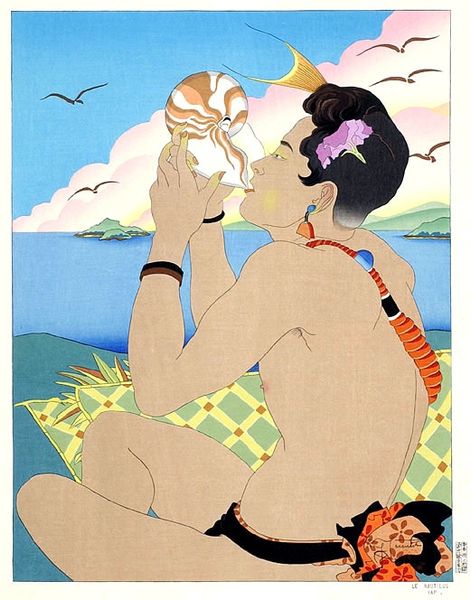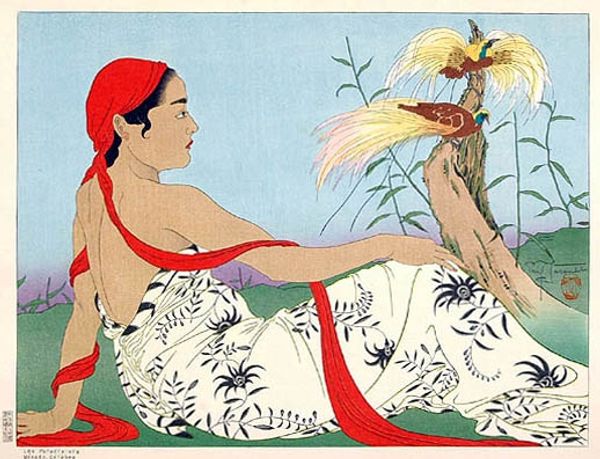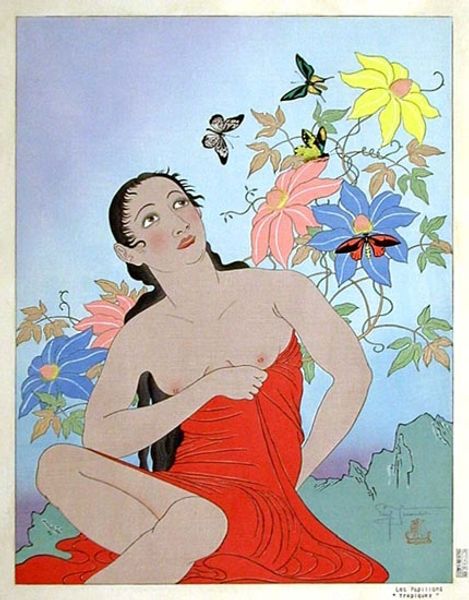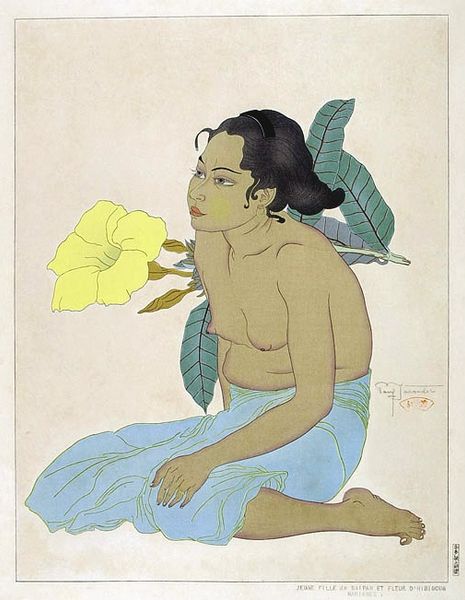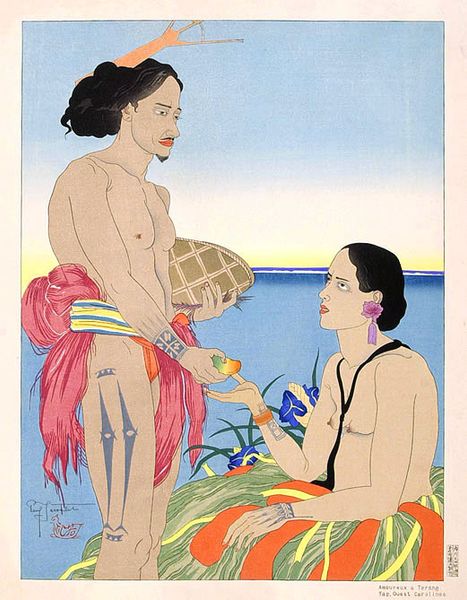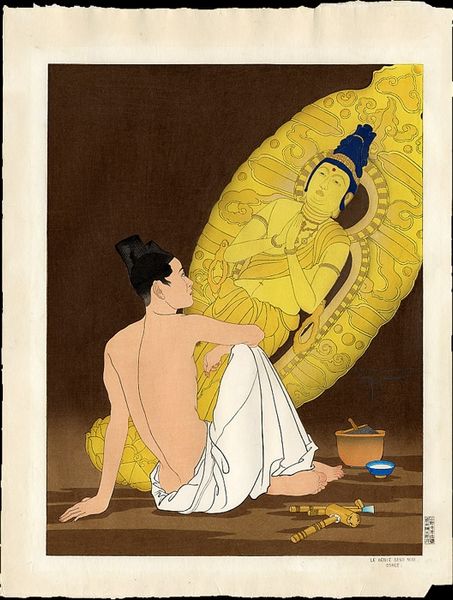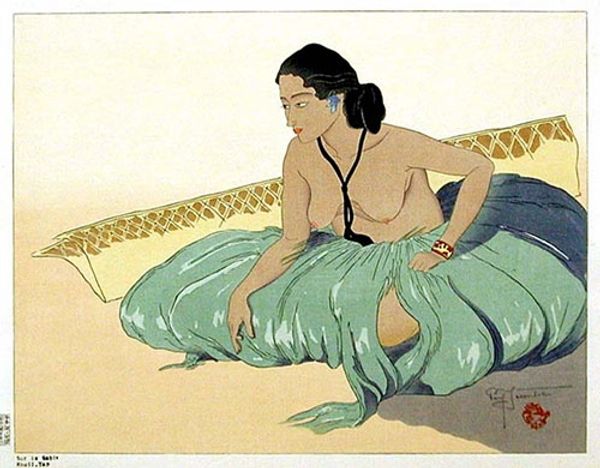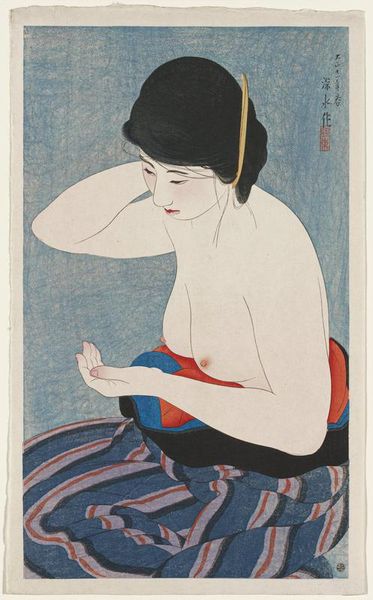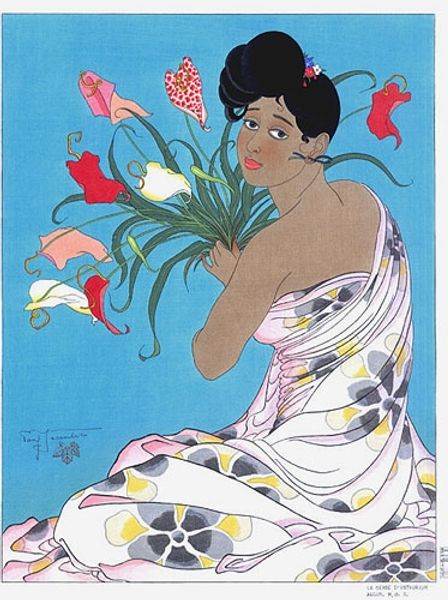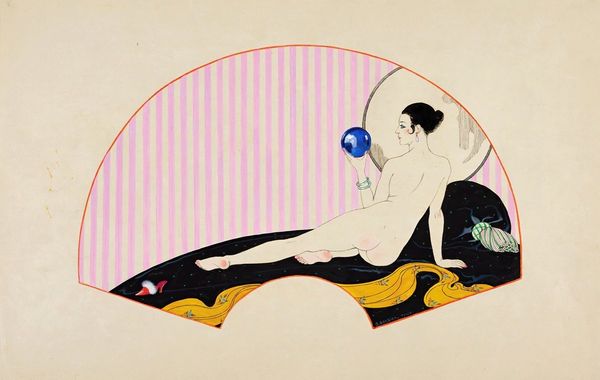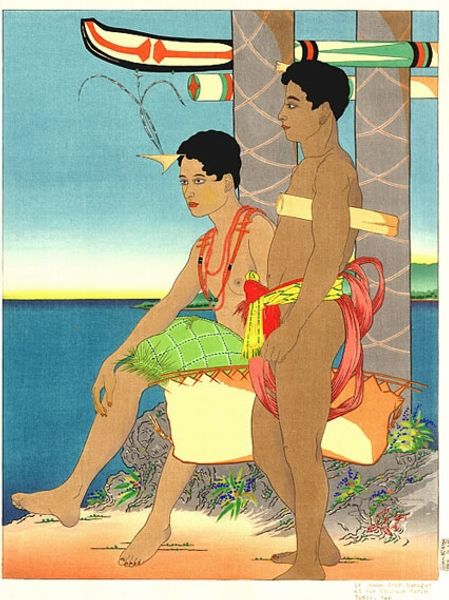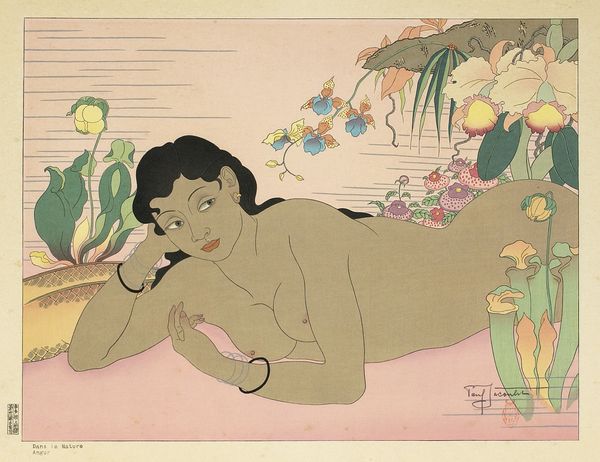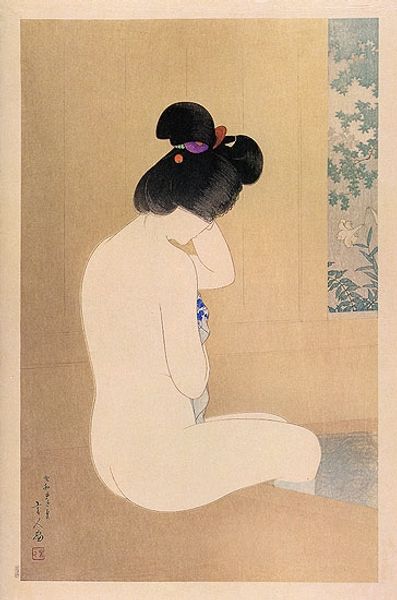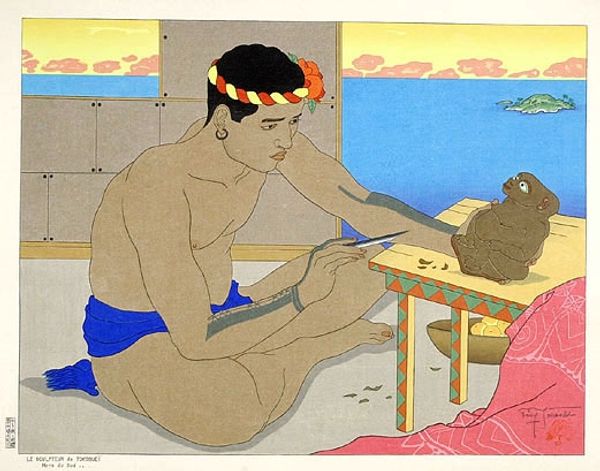
Copyright: Public domain Japan
Curator: Paul Jacoulet's 1960 print, "Dans L'Isle De Tinian. Marianes," offers a captivating portrayal reminiscent of Ukiyo-e, filtered through an Orientalist lens. Editor: It strikes me as deceptively simple at first glance—a woman with a vibrant yellow patterned wrap set against a pastel sky. There's a calmness, almost a deliberate stillness in the scene. Curator: Indeed. The materiality here is key. It's a print, allowing for sharp lines and blocks of color. Think about the physical labor involved in each print pulled, the specific papers chosen, the craftsmanship elevating it beyond mere reproduction. Editor: It's also interesting how Jacoulet frames the female figure. While nude, her gaze is cast downwards, perhaps a reflection on the colonial gaze itself, the act of observing and documenting the 'exotic'. The work touches upon issues of identity, cultural appropriation, and the politics inherent in representation. Curator: The use of that vivid yellow also tells us something about global trade. What dyes were available? How were these textiles manufactured and distributed? Was this design specifically intended for Western consumption? Editor: Right, the visual pleasure of the piece then complicates into questioning its historical and political weight. We are compelled to unpack whose desires and expectations are woven into its very fibers. There's a sense of performance, almost, and constructed identity happening, even in this seeming simplicity. Curator: A valuable reminder that aesthetics and the act of making never exist in a vacuum. The choices around production are inevitably tied to cultural forces, often operating along axes of power and labor. Editor: So much of what appears purely aesthetic actually has roots that require grappling with difficult colonial histories and complex issues of cultural ownership. Thank you. Curator: And thank you for guiding us through its challenging questions, helping see the complex connections that are woven throughout art history.
Comments
No comments
Be the first to comment and join the conversation on the ultimate creative platform.
